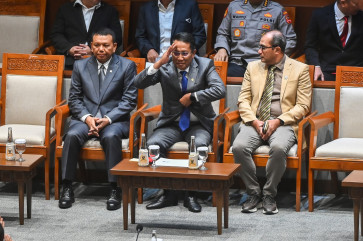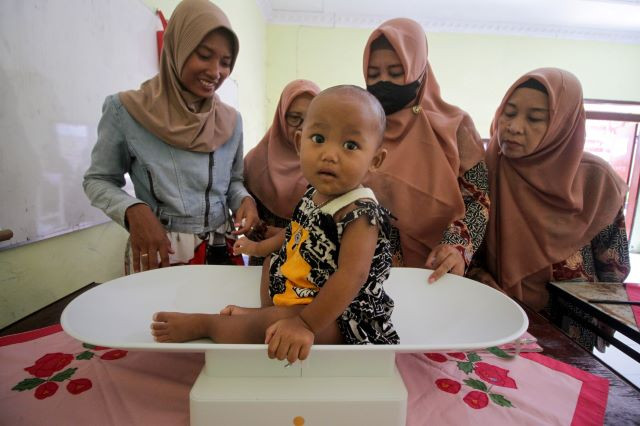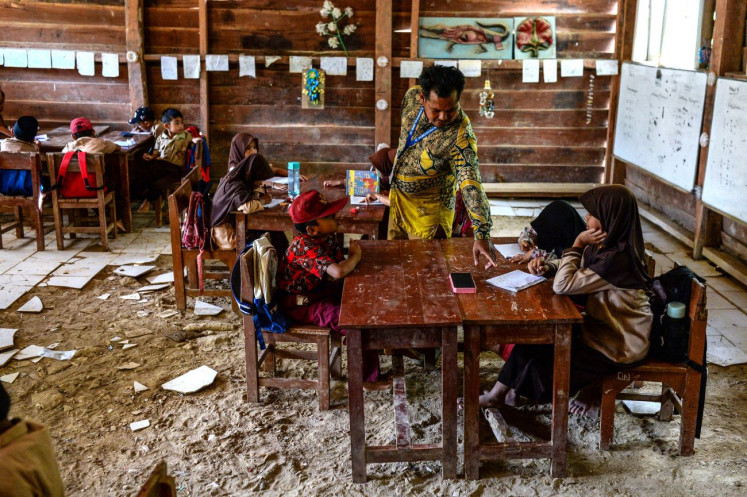Popular Reads
Top Results
Can't find what you're looking for?
View all search resultsPopular Reads
Top Results
Can't find what you're looking for?
View all search resultsBuilding resilience in ASEAN’s semiconductor supply chain
ASEAN must invest heavily in semiconductor-focused infrastructure, including cleanroom facilities, wafer fabrication facilities and advanced packaging tailored for AI, automotive and next-generation computing.
Change text size
Gift Premium Articles
to Anyone
A
s the global semiconductor market heads toward a projected US$1 trillion valuation by 2029, ASEAN stands at the crossroads of a historic opportunity.
The convergence of rapid technological advances, shifting geopolitical dynamics and structural supply chain vulnerabilities has thrust semiconductors into the spotlight as both economic growth engines and strategic assets. Traditionally a reliable contributor to the lower tiers of the semiconductor value chain, ASEAN is now being called to scale up, and quickly.
Historically, ASEAN’s role has centered on downstream segments such as assembly, testing and packaging (ATP).
Countries like Malaysia, Vietnam, Thailand and the Philippines have built competitive advantages in these areas through cost-effective labor and manufacturing efficiency. Singapore, meanwhile, has evolved into the region’s most advanced semiconductor hub, hosting wafer fabrication and IC design operations, including high-end facilities from GlobalFoundries and United Microelectronics Corporation (UMC) as well as design centers for companies like Broadcom and MediaTek.
But the global landscape is undergoing a seismic shift. The United States, via its CHIPS and Science Act of 2022, has committed more than $52 billion to re-shore chip manufacturing and reduce foreign dependencies. China, doubling down on its ‘Made in China 2025’ strategy, aims for self-reliance in advanced semiconductor technologies amid intensifying export controls.
Meanwhile, the European Union, Japan and the Republic of Korea are deploying subsidies, bilateral agreements and stricter export regimes to protect and expand their semiconductor ecosystems. Efficiency has ceded ground to security as the new organizing principle of supply chains.
This reordering, while disruptive, presents ASEAN with a rare and strategic opportunity. In response to geopolitical and pandemic-related shocks, multinational firms are accelerating “China Plus One” diversification strategies.
ASEAN is increasingly seen as a low-risk, high-reward alternative. Vietnam has attracted major semiconductor investments from Intel, Amkor and Samsung. Penang, Malaysia, is consolidating its role as a global ATP hub and expanding its research and development (R&D) capabilities. The Philippines is moving upstream, with institutions like the Philippine Institute for Integrated Circuits (PIIC) and the Center for Integrated Circuit and Device Research (CIDR) bolstering chip design capacity.
In addition to its industrial strengths, ASEAN possesses substantial critical mineral resources essential to semiconductors and clean energy technologies. Indonesia holds 42.3 percent of the world’s nickel reserves, Vietnam possesses nearly 20 percent of global rare earth elements (REEs) and the Philippines and Myanmar contribute significantly to cobalt, tin and other key materials. These resources are foundational to advanced electronics, linking ASEAN’s mining sectors directly to the tech economy of the future.
Still, significant challenges remain. Most ASEAN member states continue to occupy lower value-added positions in the semiconductor value chain. While ATP is a core regional capability, upstream segments such as electronic design automation (EDA), integrated circuit (IC) design and wafer fabrication remain underdeveloped. Closing this gap requires coordinated, strategic action at both national and regional levels.
Four priority areas stand out. First, ASEAN must invest heavily in semiconductor-focused infrastructure, including cleanroom facilities, wafer fabrication facilities and advanced packaging tailored for AI, automotive and next-generation computing. Second, the region needs to develop its human capital pipeline by aligning higher education, vocational programs and private sector partnerships to train IC designers, fabrication engineers and chip architects.
Third, ASEAN should harmonize policy through initiatives like the ASEAN Framework for Integrated Semiconductor Supply Chain (AFISS). Establishing common standards, streamlining investment promotion, strengthening intellectual property protection and facilitating digital trade will boost investor confidence and position ASEAN as a unified, high-potential bloc in the semiconductor arena.
Finally, ASEAN must deepen international partnerships. Strategic allies, including Japan, the Republic of Korea, the US and the EU, are actively seeking to diversify and secure their chip supply chains.
With its central location and growing industrial base, ASEAN is well-placed to become a trusted partner. But it must demonstrate political resolve, regulatory coordination and sustained investment in long-term competitiveness.
Semiconductors now sit at the crossroads of economic security, technological leadership and geopolitical strategy. ASEAN can no longer afford to be reactive or fragmented. By embracing a future-oriented vision and capitalizing on its comparative advantages, from skilled talent and trade networks to mineral wealth and manufacturing, ASEAN can rise from a support role to a central player in the global semiconductor ecosystem.
The window of opportunity is open. It is up to ASEAN to act, strategically, collectively and with urgency.
***
Han Phoumin is senior energy economist and Intan M.Ramli is senior policy fellow in the Policy Design Department at the Economic Research Institute for ASEAN and East Asia (ERIA). The views expressed are personal.











